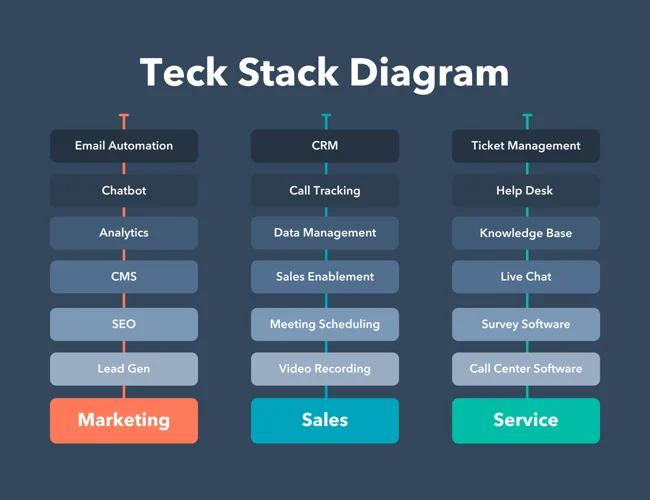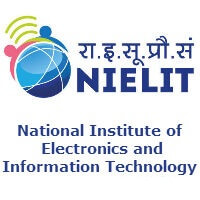In the dynamic landscape of the digital era, businesses and individuals alike rely on technology to streamline processes, enhance efficiency, and stay competitive. At the core of this technological evolution lies the concept of a “tech stack.”
In this comprehensive guide, we will delve into the intricacies of what a tech stack is, its components, and how businesses can optimize their technology arsenal to thrive in the fast-paced world of the 21st century.
1: Demystifying Tech Stacks
1.1 Understanding the Basics
At its essence, a techsslash.com refers to a combination of software, programming languages, frameworks, and tools that developers use to build and maintain a website, application, or system. Think of it as a digital toolbox where each tool serves a specific purpose, contributing to the overall functionality of the end product.
1.2 The Evolution Over Time
The concept of tech stacks isn’t new; however, the tools and technologies within them have evolved significantly over the years. In the year 2000, the tech landscape was vastly different from what it is today. Traditional stacks comprised basic languages like HTML and JavaScript, coupled with server-side languages like PHP or ASP.NET. The focus was primarily on creating static websites and simple web applications.
2: Components of a Tech Stack
2.1 Front-End Technologies
In the early 2000s, front-end development was centered around HTML and CSS for structuring and styling web content. JavaScript played a crucial role in enhancing user interactions, but its capabilities were limited compared to the modern JavaScript frameworks we have today.
Fast forward to the present, and front-end development has seen a paradigm shift. Technologies like React, Angular, and Vue.js dominate the landscape, offering dynamic and responsive user interfaces. Progressive Web Apps (PWAs) have also gained prominence, blurring the lines between web and mobile applications.
2.2 Back-End Technologies
Back in 2000, server-side development was dominated by languages like PHP, Java, and ASP.NET. Databases were often relational, with MySQL and Microsoft SQL Server being popular choices.
Today, the back-end scenario has diversified. Node.js has gained immense popularity, allowing developers to use JavaScript on the server side. Microservices architecture, serverless computing, and containerization (using technologies like Docker) have revolutionized how back-end systems are designed and deployed.
2.3 Databases
In the early 2000s, relational databases were the go-to solution for data storage. MySQL, PostgreSQL, and Microsoft SQL Server were widely used, providing a structured and organized approach to managing data.
Nowadays, the database landscape has expanded to include NoSQL databases like MongoDB, Cassandra, and Redis. These non-relational databases offer flexibility and scalability, catering to the demands of modern applications dealing with large volumes of unstructured data.
2.4 DevOps Tools
While the term “DevOps” wasn’t as mainstream in 2000, the principles of collaboration between development and operations teams were present. However, the tools and methodologies have evolved significantly. Continuous Integration (CI) and Continuous Deployment (CD) tools like Jenkins, GitLab CI, and Travis CI are now integral to efficient software delivery pipelines.
3: Importance of Choosing the Right Tech Stack
3.1 Performance and Scalability
Selecting the appropriate tech stack is crucial for achieving optimal performance and scalability. In 2000, the internet was relatively slow, and websites were designed with a focus on simplicity. Today, users demand fast-loading, responsive applications, necessitating the use of technologies that prioritize speed and efficiency.
3.2 Flexibility and Adaptability
The business environment is dynamic, and technology needs to adapt accordingly. Modern tech stacks emphasize flexibility, allowing organizations to pivot quickly in response to market changes. Cloud computing, microservices, and containerization are key components of adaptable tech architectures.
3.3 Developer Productivity
A well-chosen tech stack can significantly impact developer productivity. In the early 2000s, developers faced limitations due to the lack of powerful frameworks and tools. Today, the availability of robust frameworks and libraries allows developers to focus on building features rather than dealing with low-level complexities.
4: SEO Optimization in Tech Stacks
4.1 Importance of SEO in Tech
In the era of digital marketing, search engine optimization (SEO) is a critical aspect of a successful online presence. In 2000, SEO was relatively straightforward, focusing on keywords, meta tags, and link building. However, with the evolution of search engine algorithms, the role of tech stacks in SEO has become more nuanced.
4.2 Website Speed and SEO
Search engines, particularly Google, prioritize fast-loading websites. A modern tech stack that emphasizes performance, utilizing techniques like code splitting, lazy loading, and image optimization, can positively impact SEO rankings. Content Delivery Networks (CDNs) also play a crucial role in ensuring rapid content delivery to users across the globe.
4.3 Mobile Responsiveness
Mobile optimization is a key factor in SEO rankings, especially with the prevalence of mobile devices. Responsive design, made possible by advanced front-end frameworks, ensures that websites deliver a seamless experience across various screen sizes, positively influencing SEO performance.
4.4 Security Considerations
Search engines prioritize secure websites. A robust tech stack with the latest security measures, including HTTPS, secure coding practices, and regular security audits, contributes to a positive SEO profile. In contrast, outdated or insecure tech stacks can lead to vulnerabilities that negatively impact SEO.
5: Trends Shaping Future Tech Stacks
5.1 Artificial Intelligence and Machine Learning
The integration of AI and machine learning in tech stacks is becoming increasingly prevalent. AI-driven tools are enhancing user experiences, personalizing content, and providing valuable insights for businesses. As these technologies mature, their role in shaping future tech stacks will only expand.
5.2 Edge Computing
With the rise of IoT devices and the demand for real-time data processing, edge computing is gaining traction. Tech stacks are evolving to incorporate edge computing capabilities, ensuring faster response times and improved user experiences, particularly for applications requiring low latency.
5.3 Blockchain Technology
Blockchain is not limited to cryptocurrencies; it has applications across various industries. As blockchain technology matures, tech stacks will incorporate decentralized and secure solutions for transactions, data integrity, and smart contracts.
Conclusion:
Understanding and optimizing a tech stack is fundamental for businesses seeking to thrive in the digital landscape. The evolution from the tech stacks of 2000 to the modern, sophisticated architectures of today reflects the dynamic nature of technology.




![(CSIR UGC NET) वैज्ञानिक & औद्योगिक संशोधन परिषदे मार्फत राष्ट्रीय पात्रता चाचणी परीक्षा-2022 [मुदतवाढ]](https://majhinaukris.com/wp-content/uploads/2022/08/CSIR-UGC-NET-वैज्ञानिक-औद्योगिक-संशोधन-परिषदे-मार्फत-राष्ट्रीय-पात्रता-चाचणी-परीक्षा-2022-मुदतवाढ-300x295.gif)